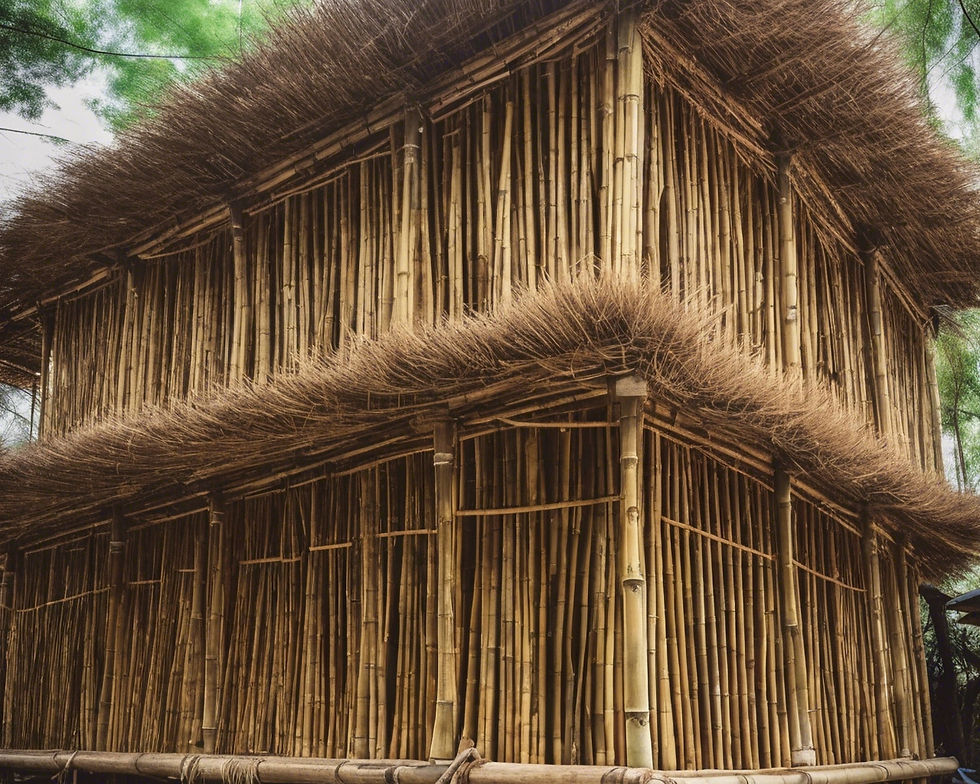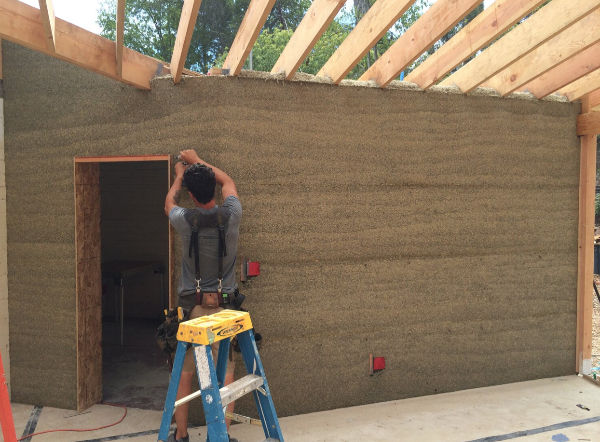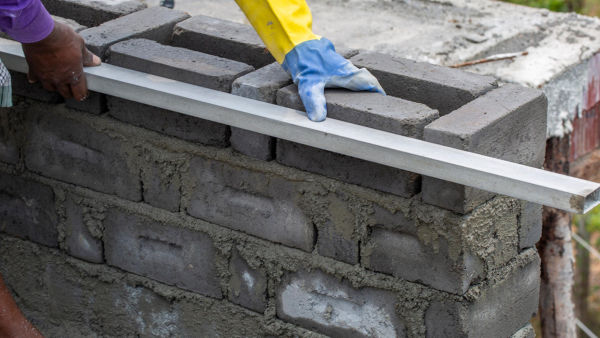Did you know that the construction industry is responsible for nearly 37% of global carbon emissions, with a substantial portion coming from traditional building materials? The push for sustainable alternatives has never been more critical as environmental concerns grow.
By embracing eco-friendly materials, we can significantly reduce our ecological footprint while conserving vital natural resources.
This blog highlights 10 groundbreaking sustainable building materials transforming modern construction. These materials benefit the environment and offer practical solutions for creating durable, innovative, and nature-conscious structures.
Whether you're planning a residential or commercial project, integrating these sustainable options can make a meaningful difference in protecting our planet.
What are Sustainable Building Materials?
Sustainable building materials refer to products that are sourced, manufactured, and used in ways that have minimal impact on the environment. These materials are renewable, recyclable, and energy-efficient throughout their lifecycle.
Examples of green building materials such as bamboo, recycled steel, and natural insulation like cork. By choosing these materials, builders can significantly reduce carbon emissions, waste, and the overall environmental degradation caused by construction.
10 Green Building Materials That Help to Save the Earth and Nature
Bamboo

Bamboo has gained popularity in sustainable construction due to its rapid growth rate, strength, and versatility. Unlike hardwood trees, which can take decades to mature, bamboo can be harvested in just 3-5 years, making it a highly renewable resource. Bamboo is used in flooring, wall panelling, and even structural components due to its durability and flexibility.
Additionally, bamboo’s root system helps prevent soil erosion, making it an environmentally sound option. One of the key benefits of this sustainable building material is that bamboo can be cultivated without the use of pesticides or fertilizers, further reducing its environmental impact.
Bamboo is also highly resistant to pests and moisture, adding to its appeal in both humid and temperate climates.
Recycled Steel

Steel production is notorious for being energy-intensive, but using recycled steel can significantly reduce the environmental cost. Recycled steel requires 75% less energy to produce compared to new steel, and it helps minimize mining and ore extraction.
This material is particularly valued in construction due to its strength, allowing it to be used for beams, girders, and other load-bearing structures. Recycled steel also offers excellent longevity and is resistant to rot, fire, and pests, which means it reduces the need for maintenance and replacement.
By reusing existing steel, construction projects contribute to a circular economy, where materials are continuously recycled and repurposed, lowering the demand for raw materials.
Cork

Cork is harvested from the bark of cork oak trees without harming the tree itself, which makes it one of the most renewable materials available. The bark regenerates after harvest, allowing the same tree to be harvested every nine years.
Cork is a versatile material used for flooring, wall coverings, and insulation. It has a unique cellular structure that makes it naturally resistant to moisture, fire, and even pests like termites.
Cork also has excellent acoustic and thermal insulation properties, making it ideal for eco-friendly office and home spaces where noise reduction and energy efficiency are priorities. As a biodegradable material, cork doesn’t contribute to landfill waste, unlike synthetic alternatives.
Recycled Plastic

In recent years, recycled plastic has become an innovative solution to repurpose waste plastic into useful building materials. Plastic bottles, bags, and other debris are melted down and transformed into composite materials, such as plastic lumber, which can be used for decking, roofing tiles, and even insulation.
These eco-friendly building materials are incredibly durable, resistant to rot and mould, and require very little maintenance. By reducing plastic waste that would otherwise end up in landfills or oceans, recycled plastic helps address one of the world’s most pressing environmental challenges.
Additionally, plastic lumber is lightweight and easy to work with, making it a cost-effective option for various construction projects.
Reclaimed Wood

Reclaimed wood is sourced from old buildings, barns, and even ships, giving it a second life in modern construction. This material is prized for its unique aesthetic, often featuring rich textures and weathered finishes that add character to spaces.
Reclaimed wood reduces the need for new logging, helping to preserve forests and reduce deforestation.
It also prevents old wood from being discarded and ending up in landfills. In terms of strength and durability, reclaimed wood can often surpass new wood, as older trees are more mature when harvested.
Reclaimed wood can be used for flooring, furniture, and structural elements, making it a versatile choice for eco-conscious builders.
Straw Bales

StrawBales House
Straw bales are an ancient building material that has found new relevance in sustainable architecture. Compressed straw bales provide excellent insulation, keeping homes warm in winter and cool in summer, thus reducing energy consumption. Straw is an agricultural byproduct, making it an inexpensive and widely available resource.
When used in construction, straw bales are stacked within a framework and then plastered over, creating thick, insulated walls that are fire-resistant and soundproof. Additionally, straw is biodegradable, so when a building’s life comes to an end, the material can return to the earth without causing environmental harm.
Straw bale construction is especially suited for rural or low-density areas where sustainable, low-cost housing is needed.
Hempcrete

Hempcrete is a bio-composite material made from the inner fibres of the hemp plant mixed with a lime-based binder. This creates a lightweight yet durable material that provides excellent insulation and thermal mass.
Hempcrete is breathable, meaning it allows moisture to pass through, reducing the risk of mould growth and improving indoor air quality.
One of hempcrete's special features is its ability to absorb carbon dioxide from the air, which helps reduce pollution, making it a carbon-negative building material.
Hemp grows quickly, requires minimal water and pesticides, and helps restore soil health, making it an ideal sustainable housing building material for the construction industry. Hempcrete is often used in walls, insulation, and even flooring.
Rammed Earth

Rammed earth is an ancient construction technique that involves compacting layers of earth into formwork to create solid, dense walls. The resulting structure is highly durable and offers excellent thermal mass, helping to regulate indoor temperatures by absorbing and slowly releasing heat.
Rammed earth walls are incredibly energy-efficient and can last for hundreds of years with minimal maintenance. Modern rammed earth construction often incorporates stabilizers like cement or lime to enhance durability and strength.
One great thing about rammed earth is that it's simple—using local materials means fewer emissions from transportation, while the natural aesthetic of the material eliminates the need for additional finishes like paint or cladding.
Mycelium

Mycelium, the root structure of fungi, is being used to create innovative sustainable building materials. Mycelium grows rapidly, binding together organic waste like sawdust or agricultural byproducts to form lightweight yet strong materials.
These materials are biodegradable, flame-resistant, eco-friendly and possess excellent insulation properties.
Mycelium-based products are now being used for insulation panels, bricks, and even furniture. Because mycelium grows in the dark with minimal energy input, it has the potential to revolutionize sustainable manufacturing.
Its organic, carbon-neutral nature makes it a promising solution for reducing the environmental impact of the construction industry.
Fly Ash Bricks

Fly ash is a byproduct of coal combustion in power plants, but instead of discarding this waste, it can be recycled into fly ash bricks. These bricks are not only stronger and more durable than traditional clay bricks but also have a lower environmental impact.
Fly ash bricks require less energy to produce and generate fewer greenhouse gas emissions compared to traditional brick manufacturing. They also provide better thermal insulation, reducing energy consumption in buildings.
By repurposing industrial waste, fly ash bricks contribute to a circular economy and reduce the amount of waste sent to landfills.
Advantages of Using Green Building Materials in Building
Green building materials offer numerous advantages for both the environment and building occupants. These materials often require less energy to produce, reduce resource extraction, and result in less waste.
Additionally, the advantages of green building materials include better energy efficiency, lower operational costs, and healthier indoor environments.
For example, bamboo and cork provide natural insulation, reducing the need for artificial heating and cooling. Recycled steel and reclaimed wood cut down on resource-intensive processes, making them ideal for reducing carbon footprints in construction projects.
Moreover, the use of mycelium and hempcrete as biodegradable alternatives ensures that buildings are not only eco-friendly but also reduce landfill waste.
How Sustainable Building Materials Help Preserve Nature and the Planet.
By incorporating sustainable building materials, architects and builders are taking crucial steps toward preserving nature and protecting our planet. Using locally sourced, renewable, and recyclable materials decreases the need for long-distance transportation and lowers the overall carbon emissions of construction.
Moreover, materials like straw bales and hempcrete help conserve energy within buildings by improving insulation, thus reducing the reliance on non-renewable energy sources. Another significant impact is the preservation of natural habitats.
Reclaimed wood, for instance, reduces the need for deforestation, which helps protect forests and wildlife. Similarly, recycled plastic and fly ash bricks provide practical solutions for waste management, turning industrial byproducts into valuable construction materials.
Conclusion
The future of architecture and construction lies in the adoption of sustainable building materials and methods. By selecting eco-friendly alternatives like bamboo, recycled steel, hempcrete, and more, we can significantly reduce the environmental impact of our built environment. These materials not only help preserve our planet but also promote healthier, more sustainable lifestyles for generations to come.
At Auroma Architecture, we are dedicated to designing eco-friendly spaces that contribute to a greener, more sustainable future. By incorporating green building materials and sustainable construction methods, we aim to create architecture that harmonizes with nature and reduces its ecological footprint. Connect with us to discover how we can bring sustainability to your next project.






